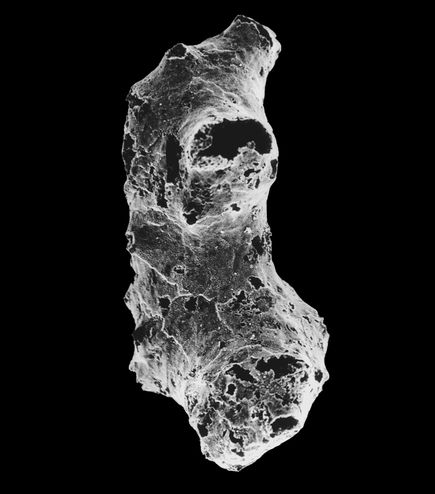Most Ancient Animal To Date Discovered, Possibly The Ancestor of All Animals
In some 760 million year old rock in Namibia, geologists have found tiny fossils, each about the size of a grain of sand. These fossils of Otavia antiqua, a prehistoric sponge, have now taken the title of oldest known animal, snatching it away from some other sponges who were a scant 650 million years young. But these are not just really old sponges, no. They may actually be the first multicellular animals ever and the de facto ancestor of dinosaurs, humans, and basically everything in between.
It wasn’t like researchers found only one or two of these fossils either, the 760 million year old stone was littered with hundreds of them, suggesting they were prosperous little guys. “In fact, when we look at thin sections of the rocks, certain samples would likely yield thousands of specimens. Thus, it is possible that the organisms were very abundant,” said Anthony Prave, a geologist at the University of St. Andrews and leader of a study on the organism.
The researchers think that –in true sponge form– Otavia antiqua subsisted on a diet of algae and bacteria which it sucked into its body through its pores, digesting them in a central body cavitiy like some sort of tiny, ancient Sarlacc pit. The set up seemed to serve it well, as the fossil record indicates that it survived two major freeze-overs where the Earth was practically covered with ice. In short, the animal kingdom as we know it may all be traced back to a sponge, but rest assured, it was one hardcore sponge.
(via National Geographic, Image credit Anthony Prave)
- Sponge map shows projected water consumption in 2030
- The world’s largest single-celled sponge
- SpongeBob? A little less hardcore
Have a tip we should know? [email protected]
